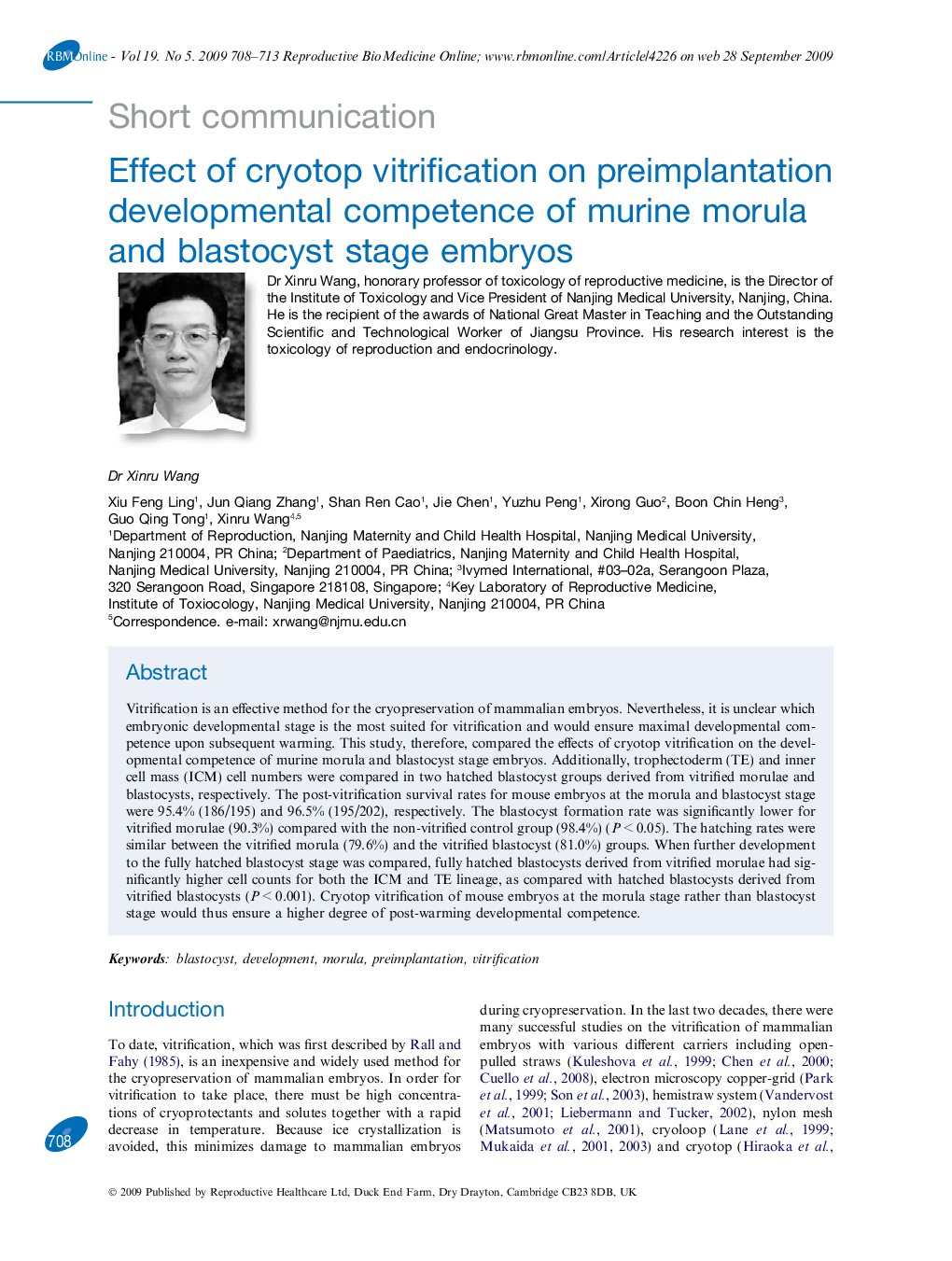| Article ID | Journal | Published Year | Pages | File Type |
|---|---|---|---|---|
| 3971976 | Reproductive BioMedicine Online | 2009 | 6 Pages |
Abstract
Vitrification is an effective method for the cryopreservation of mammalian embryos. Nevertheless, it is unclear which embryonic developmental stage is the most suited for vitrification and would ensure maximal developmental competence upon subsequent warming. This study, therefore, compared the effects of cryotop vitrification on the developmental competence of murine morula and blastocyst stage embryos. Additionally, trophectoderm (TE) and inner cell mass (ICM) cell numbers were compared in two hatched blastocyst groups derived from vitrified morulae and blastocysts, respectively. The post-vitrification survival rates for mouse embryos at the morula and blastocyst stage were 95.4% (186/195) and 96.5% (195/202), respectively. The blastocyst formation rate was significantly lower for vitrified morulae (90.3%) compared with the non-vitrified control group (98.4%) (PÂ <Â 0.05). The hatching rates were similar between the vitrified morula (79.6%) and the vitrified blastocyst (81.0%) groups. When further development to the fully hatched blastocyst stage was compared, fully hatched blastocysts derived from vitrified morulae had significantly higher cell counts for both the ICM and TE lineage, as compared with hatched blastocysts derived from vitrified blastocysts (PÂ <Â 0.001). Cryotop vitrification of mouse embryos at the morula stage rather than blastocyst stage would thus ensure a higher degree of post-warming developmental competence.
Related Topics
Health Sciences
Medicine and Dentistry
Obstetrics, Gynecology and Women's Health
Authors
Xiu Feng Ling, Jun Qiang Zhang, Shan Ren Cao, Jie Chen, Yuzhu Peng, Xirong Guo, Boon Chin Heng, Guo Qing Tong, Xinru Wang,
